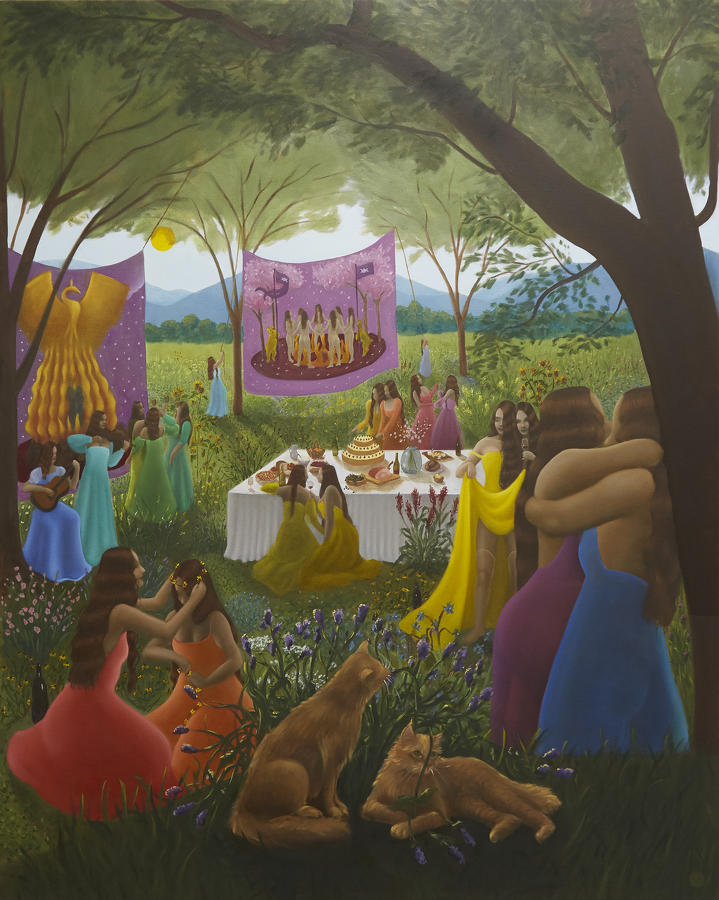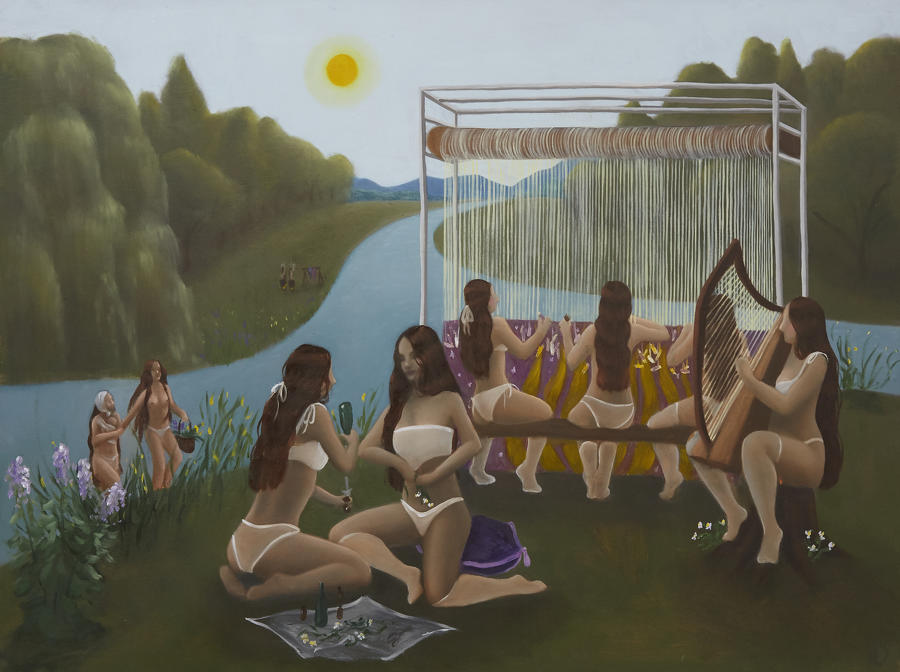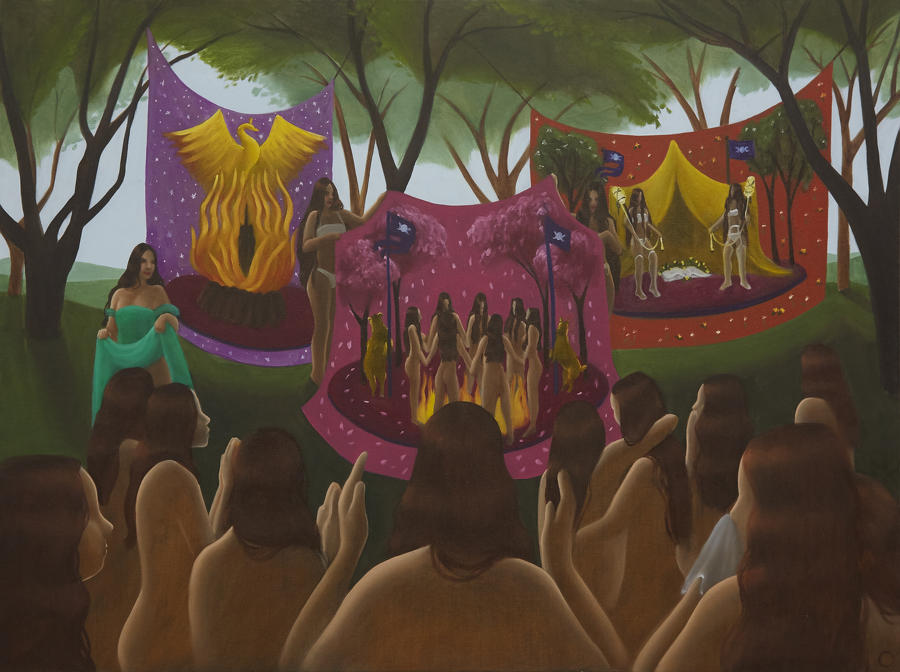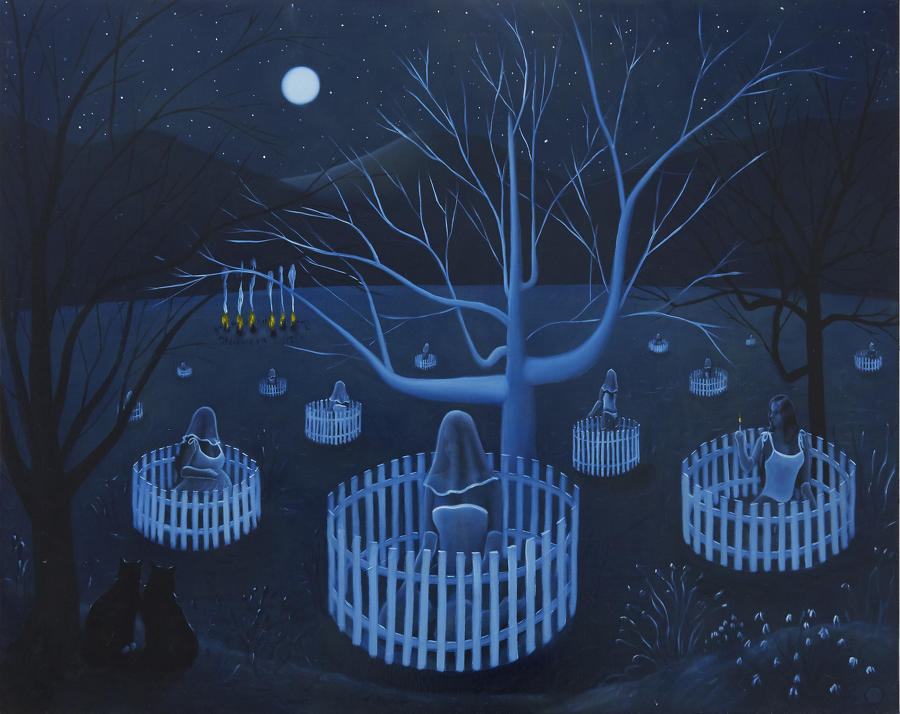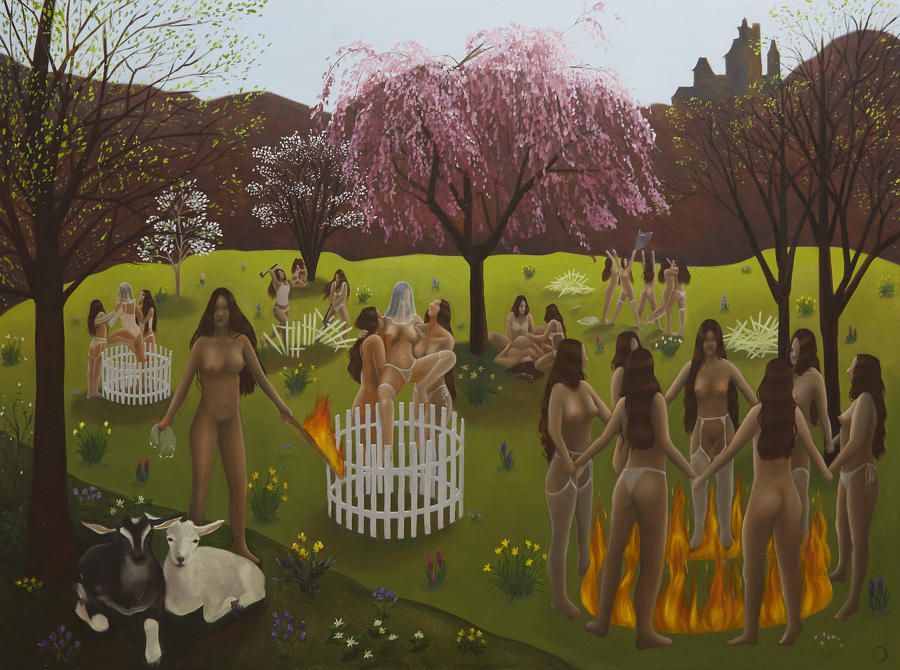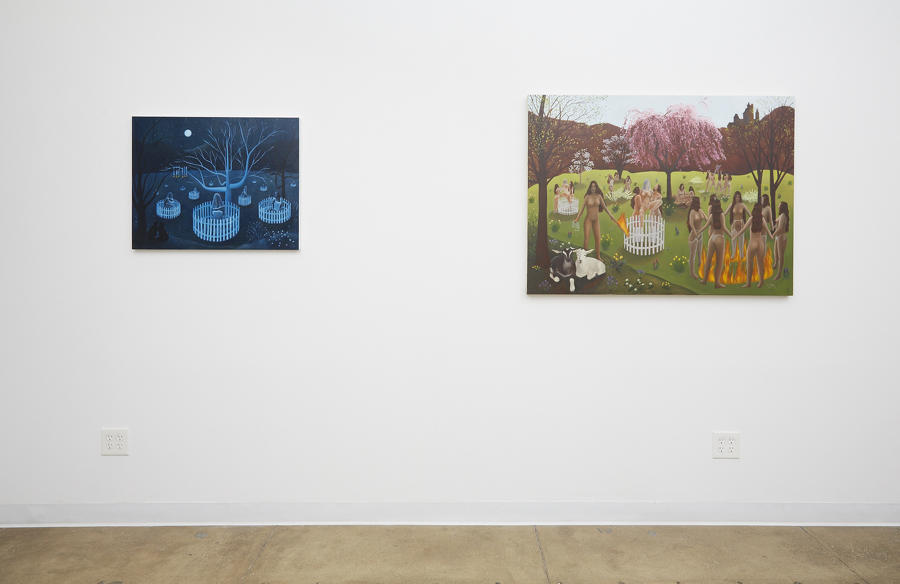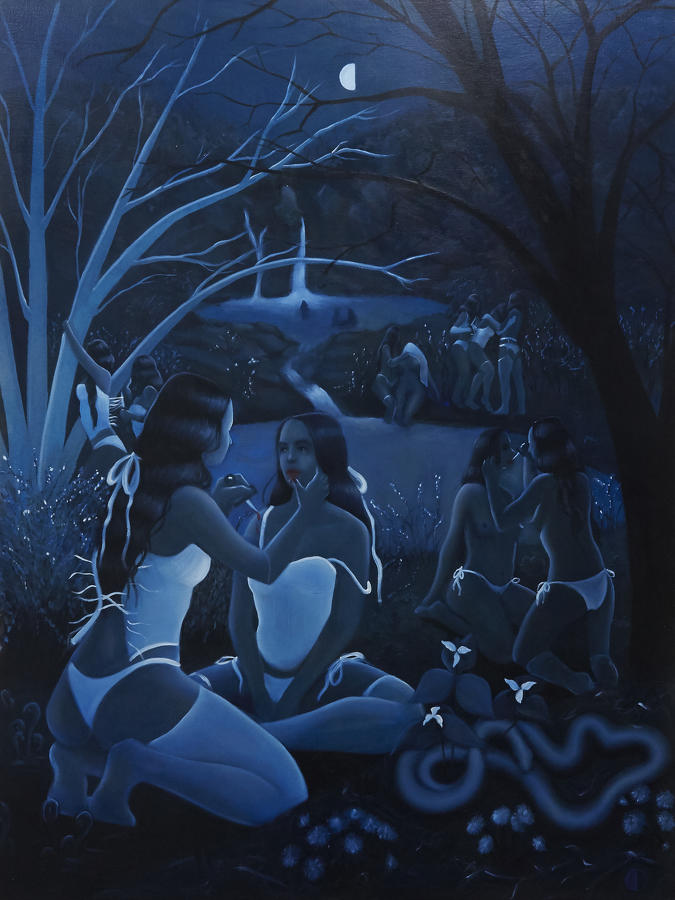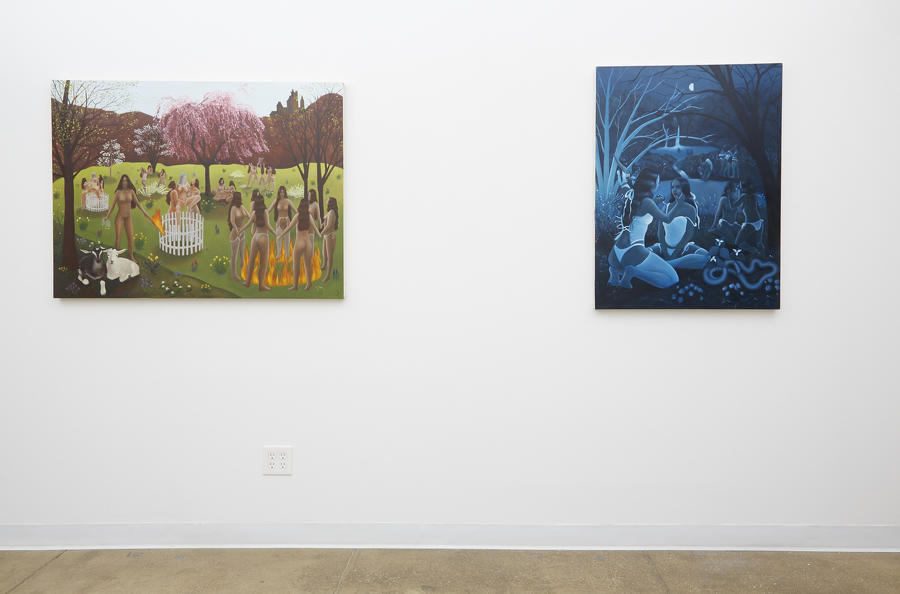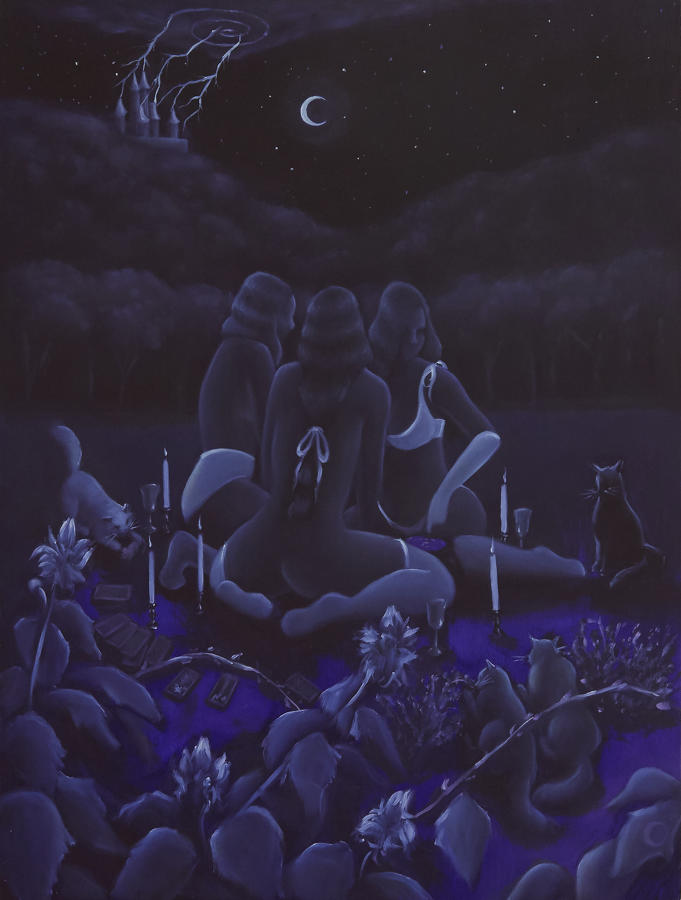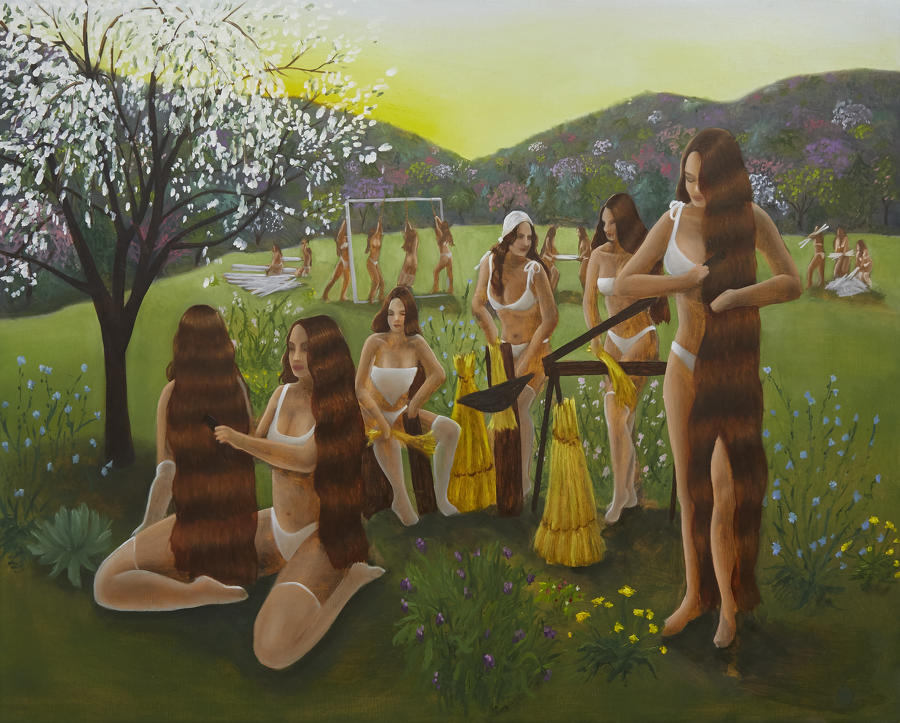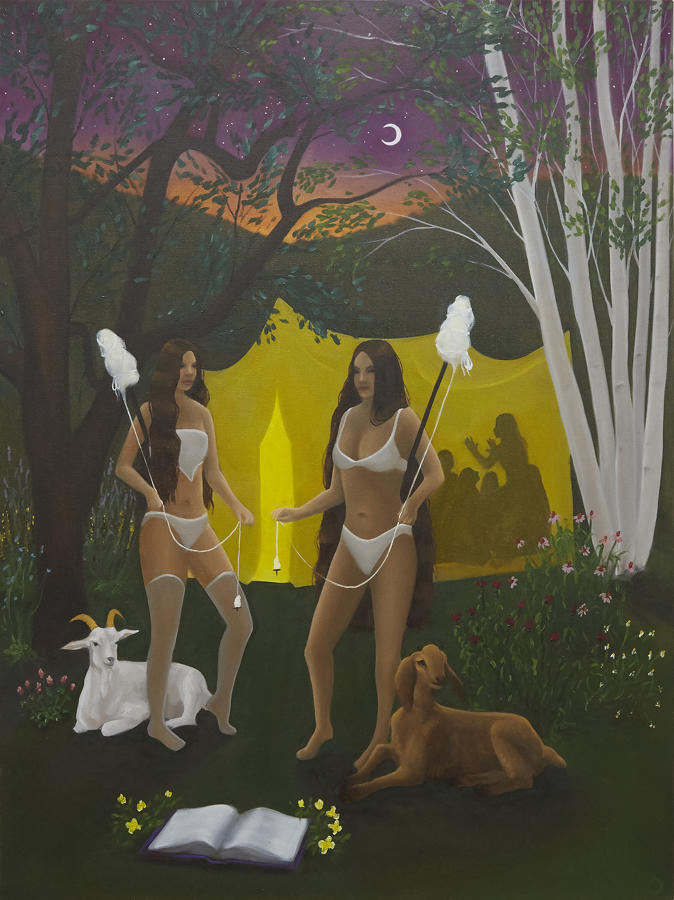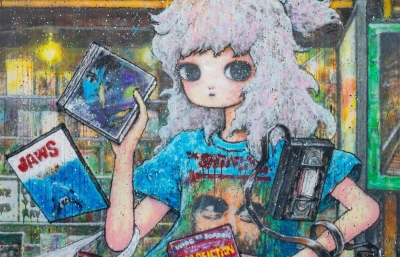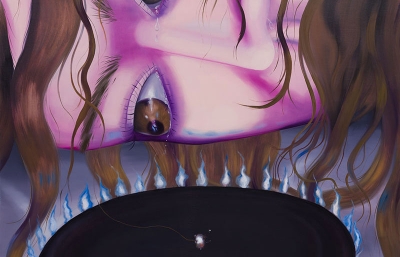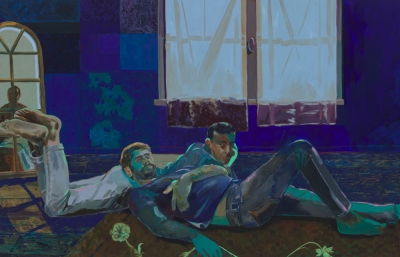In Miller’s second solo exhibition at Monya Rowe Gallery the artist presents a series of narrative paintings following seasonal and moon cycles, from full moon to full moon, and winter through summer. Ring of Fire chronicles a group of isolated women breaking out of social and physical enclosures in the aftermath of the witch burnings (circa 17th c.). They forge a new life through community, Magic, traditional women’s labor practices, and ultimately create their own storytelling through their own tapestry production. Miller says: “My story begins after a sort of condensed timeline between the European witch hunts and the home-bound, dolled-up housewife of 1950’s American suburbs.”
Miller drew inspiration from a range of sources, such as, the Unicorn Tapestries (c. 1495–1505), Tarot cards, Renaissance festivals, Magic, religious ceremonies, and the books Marriage, A History (2005) by Stephanie Coontz and The Classic Fairy Tales (2016), edited by Maria Tatar. Caliban and the Witch (1998) by Silvia Federici played a significant role in forming the narratives. The book examines how the transition from feudalism to capitalism impacted women by excluding them from receiving a wage, confining them to the unpaid labor of raising children, caring for the elderly and sick, nurturing their husbands or partners, and maintaining the home. This was the housewifization of women, the reduction to a second-class status where women became totally dependent on the income of men. Essentially, the rise of colonialism and patriarchal forms intersected with the witch-hunts to oppress and demonize women.
Miller uses fairytales or storytelling as a vehicle for reflection on power dynamics and Ownership. Through the lens of the feminine experience, Miller‘s psychological narrative centers around the complexity and continuous transformation of the Human Experience. In a departure from Miller’s previous body of work, the protagonists are liberated, self-aware, and focused on collaboration over competition, healing over harm, and production over destruction. The newly introduced vibrant colors heighten the fantastical situations and subvert the erotically-charged undertones. Miller’s colonies of women are surrounded by mountainous landscapes populated with millefleurs and medicinal herbs specific to the northeast region of the U.S. They partake in bacchanalian celebrations brimming with cakes, wine and music. In this safe space, the women help each other out of corsets, brush one another’s hair and even help to cut open mouths so the women can speak. While caring and healing are ever-present, there are hints of melodramatic undercurrents. “It’s like there’s a pain in finding your voice and speaking your truth, but it’s beautiful and liberating.”, says the artist.



